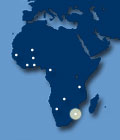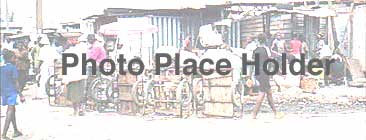|
||||||||||||
| Burkina Faso | Cameroon | Cote D’Ivoire | Ghana | Mali | Namibia | Senegal | Swaziland | Tanzania | Zambia | ||||||||||||
Information Source: Swaziland: Country Assessment Report. |
||||||||||||
|
||||||||||||
|
Context Summary Swaziland is a small landlocked country of about 17,360 square kilometers, with a population of approximately 1 million in 1999, at a density of 57 persons per square kilometer. Swaziland has some natural mineral resources (coal, asbestos, timber) but is a predominantly market economy based largely on wholesale and retail trade, agriculture and light industries. The Gross Domestic Product per capita is approximately US$1,300. The climate is generally hot in the low veld (to the east) and more temperate and wet in the high veld (to the west). The Matsapha Industrial Estate in large part drove urbanization in Swaziland. It began developing as early as 1963 and development accelerated from the late 60s through the 80s when the economy grew quickly, assisted by the toughening of international sanctions against South Africa, which prompted many south African firms or multi-nationals with South African operations to relocate to Swaziland. In recent years economic growth has slowed in part due to increased competition, an economic recession and the lifting of international sanctions in South Africa. Swaziland has a relatively low level of urbanization but in recent years this has been growing rapidly, partly due to a drought in 1992 and economic decline leading to some rural to urban migration. Population in urban and peri-urban areas is now reckoned to be about 33 percent. Most urban growth has been unplanned and informal. More than 60 percent of the population living in the Mbabane–Manzini corridor live in informal, unplanned communities in sub-standard structures on un-surveyed land without legal title. Less than 50 percent have access to safe water and fewer than 20 percent are connected to a waterborne sewerage network. Lessons from Recent Projects - Summary Throughout the planning and design of the three main upgrading schemes of the Swaziland Urban Development Project (SUDP), and the beginning of implementation of the first scheme, lessons include:
|
||||||||||||
|
|
||||||||||||
| For more information: Click on: Foreword 1. Background 2. Current Situation 3. Policy Context and Institutional Framework 4. Upgrading Projects and Programs 5. Case Study 6. Lessons Learned 7. Challenges and Proposed Next Steps Annex A: Country and City Data Annex B: Bibliography Annex C: Contact Information Annex D: Summary of Upgrading Typologies Download for Printing: |
||||||||||||
| < Return to top > | ||||||||||||
|
||||||||||||


